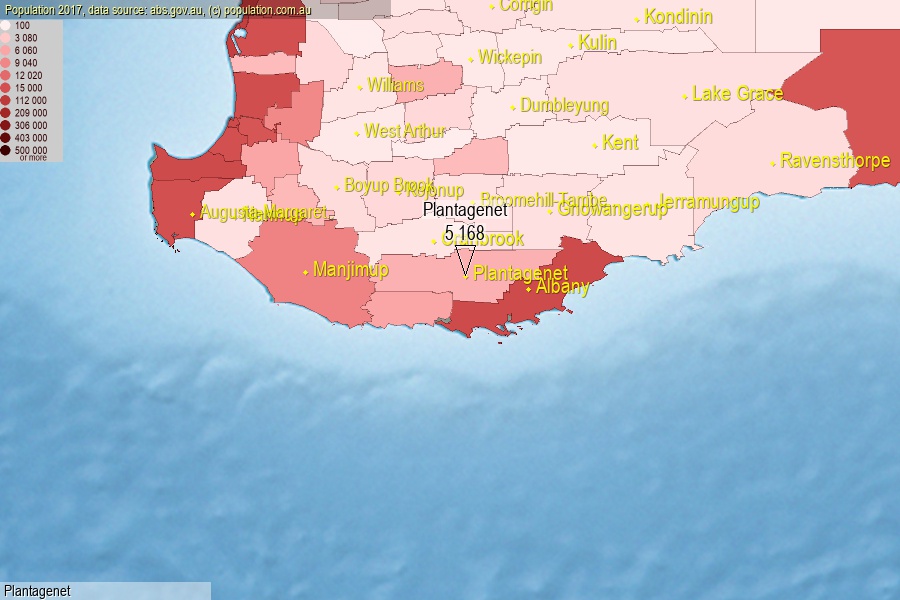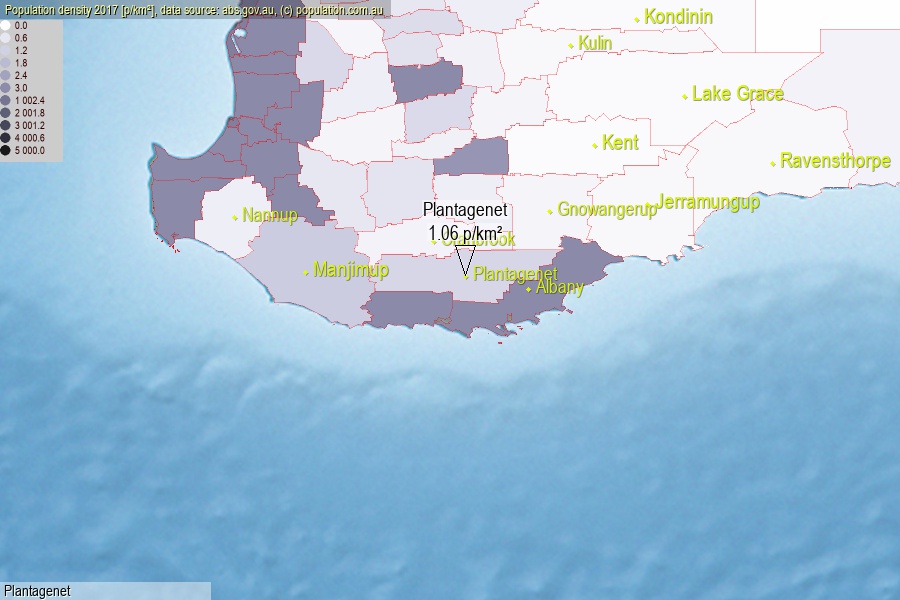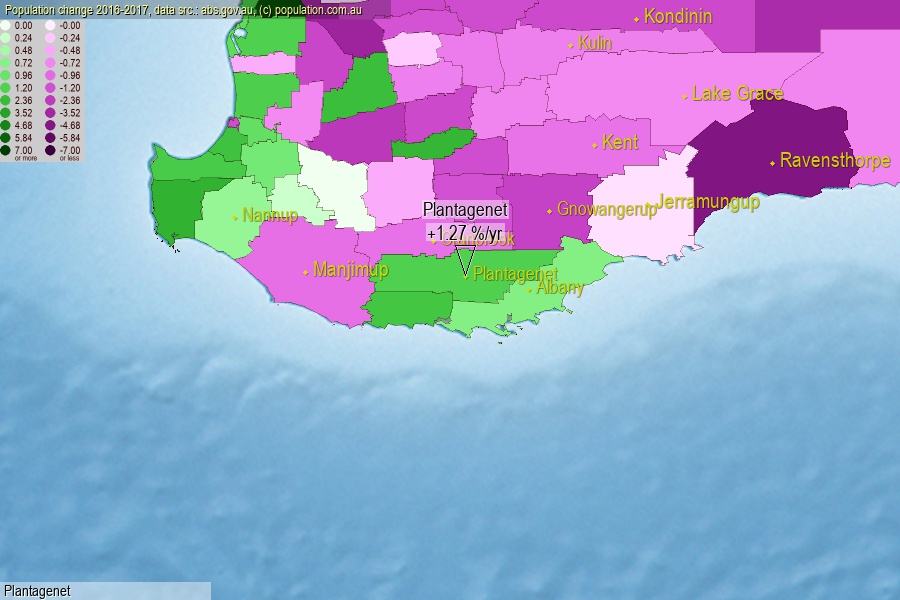 population.com.au
population.com.auLast official estimated population of Plantagenet Shire (as Local Government Area) was 5 168 people (on 2017-06-30)[2]. This was 0.02% of total Australian population and 0.199% of WA population. Area of Plantagenet is 4 876.70 km², in this year population density was 1.06 p/km² . If population growth rate would be same as in period 2016-2017 (+1.27%/yr), Plantagenet population in 2025 would be 5 719. [0]



Click to enlarge. Plantagenet is located in the center of the images.
Population [people], population density [p./km²] and population change [%/year] [2]
[1996-2001] +1.86 %/Y
[2001-2002] -1.04 %/Y
[2002-2003] -0.77 %/Y
[2003-2004] -0.37 %/Y
[2004-2005] +0.83 %/Y
[2005-2006] +1.10 %/Y
[2006-2007] +1.45 %/Y
[2007-2008] +2.12 %/Y
[2008-2009] +2.28 %/Y
[2009-2010] +0.08 %/Y
[2010-2011] +1.08 %/Y
[2011-2012] +1.71 %/Y
[2012-2013] +1.06 %/Y
[2013-2014] -0.41 %/Y
[2014-2015] -0.41 %/Y
[2015-2016] -0.53 %/Y
[2016-2017] +1.27 %/Y
[0] Calculated with linear interpolation from officially estimated population
[1] Read more about LGA and Australian Statistical Geography Standard (ASGS) on abs.gov.au
[2] Population data from Australian Bureau of Statistics (Population and density: 2017; change: 2016-2017)
[3] Digital Boundaries: Australian Statistical Geography Standard (ASGS) 2016.